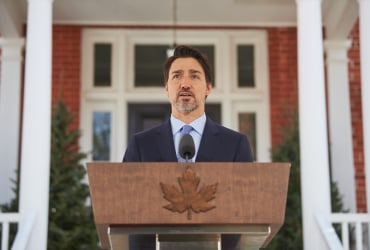This story was originally published by The Guardian and appears here as part of the Climate Table collaboration.
Planting trees, restoring wetlands, mangroves and other natural ways to protect the environment from the impacts of the climate crisis could save hundreds of billions of dollars a year and replace high-carbon infrastructure, according to an investigation.
Planting trees helps protect the earth from floods and landslides, Mangroves buffer sea level rise and storm surge.and wetlands act like sponges to absorb excess water. These forms of “natural infrastructure”, or nature-based solutions, have the added benefit of absorbing carbon dioxide from the atmosphere, acting as natural carbon sinks.
But these natural alternatives to built infrastructure, such as seawalls and flood barriers, are often neglected and underfunded.
Research published Monday by the International Institute for Sustainable Development (IISD) found that using natural infrastructure to protect against climate breakdown could save up to $ 248 billion a year worldwide, costing only half that of equivalent built infrastructure and providing the same protection.
Nature-based solutions also tend to be cheaper to maintain, while creating local jobs and added benefits such as helping clean up air and water pollution, improving habitats for wildlife, and restoring natural ecosystems. Mangrove swampsFor example, fish use them as hatcheries, benefiting local fisheries and attracting other wild animals, but about a third of them have been destroyed or damaged around the world in recent decades in the pursuit of development.
What people are reading

More than $ 4 trillion in new infrastructure is needed around the world each year, more than a tenth of which could be covered by nature-based solutions, according to the report.
Building new infrastructure to protect against the ravages of global warming – in the form of heat waves, droughts, floods, sea level rises and fiercer storms – is now urgent, because extreme weather is taking over the world. . Lack of funding for adaptation measures, however, and initiatives such as wetland restoration, peat bogs, and other natural features are difficult to finance because the benefits are often fuzzy.
Rich countries are supposed guarantee at least $ 100 billion a year flows to developing countries in climate finance to help them reduce greenhouse gas emissions and cope with the impacts of extreme weather. The UN Secretary General, António Guterres, has asked that half of those funds be dedicated to adaptation measures.
The UK government, which houses the Climate Summit COP26 which opens in Glasgow on October 31st, highlights nature-based solutions in conversations, and new financing and a variety of innovative projects they are expected to be announced.
Liesbeth Casier, IISD Senior Policy Adviser, said: “Improving adaptation is really important and nature can play a role in that. Governments should be more aware of the role that nature can play, but we often do not value natural infrastructure in the same way that we value built infrastructure. That needs to change.
More than $ 4 trillion in new infrastructure is needed around the world each year, more than a tenth of which could be achieved using nature-based solutions, according to a report by the International Institute for Sustainable Development. #Climate crisis
“COP26 is putting nature much more at the center of solutions, and we hope this opportunity will be seized as the benefits are multifaceted.”
Reference-www.nationalobserver.com